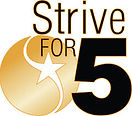Chapter 41
Species Interactions
Essential Knowledge:
1.C.2: Speciation may occur when two populations become reproductively isolated from each other.
1.C.3: Populations of organisms continue to evolve.
2.D.1: All biological systems from cells and organisms to populations, communities, and ecosystems are affected by complex biotic and abiotic interactions involving exchange of matter and free energy.
4.C.3: The level of variation in a population affects population dynamics.
4.C.4: The diversity of species within an ecosystem may influence the stability of the ecosystem.
Learning Objectives:
4.10 Refine representations and models to illustrate biocomplexity due to interactions of the constituent parts.
4.15 Use visual representations to analyze situations or solve problems qualitatively to illustrate how interactions among living systems and with their environment result in the movement of matter and energy.
4.16 Predict the effects of a change of matter or energy availability on communities.
4.20 Explain how the distribution of ecosystems changes over time by identifying large-scale events that have resulted in these changes in the past.
4.21 Predict consequences of human actions on both local and global ecosystems.
Big Ideas:
Species extinction rates are higher in times of ecological stress, with more risk to those populations with little genetic diversity that face decreases in the availability of free energy.
Mathematical and computer models are used to study population dynamics and the vulnerabilities of at-risk species.
Bozeman Science: Cooperative Interactions

Scientific Skills Exercise:
Using the logistical equation to model population growth
What happens to the size of a population when it overshoots its carrying capacity?
Textbook page 860

Test Your Understanding
Textbook page 121, #1-6.
As you complete test, mark questions with:
a star (I know this),
a checkmark (I might know this),
or a question mark (I don't know, I guessed).
Self-correct.
Write validations/corrections for checkmarks, question marks, and missed stars (oops).

Illustrative
x
a
m
p
l
e
s
Species diversity
Life history strategy (biennial plants, reproductive diapause)
Reproduction issues
Hibernation and migration in animals
Human impact on ecosystem and species extinction rates
Water availability
Sunlight
Predator-prey relationships
Water and nutrient availability
Population density
Territorial marking in animals
Migration patterns


Concept
A
R
D
S
climate
climograph
biome
thermocline
dispersal/dispersion
biotic
abiotic
density (population)
immigration
emigration
life tables
survivorship curve
demography
exponential population growth
intrinsic rate of increase
carrying capacity
logistical population growth
population growth formula

Critical Thinking
A: Suppose global air circulation suddenly reversed, with most air ascending at 30 degrees north and south latitude and descending at the equator. At what latitude would you most likely find deserts?
B: In which aquatic biomes might you find an aphotic zone ?
C: If you were an ecologist studying the chemical and physical limits to the distributions of species, how might you rearrange the flowchart of factors limiting geographic distribution?
D: Grey whales gather each winter near baja California to give birth. How might such behavior make it easier for ecologists to estimate the birth and death rate for the species?
E: As an ecologist who manages a wildlife preserve, you want to increase the preserve's carrying capacity for a particular endangered species. How might you go about accomplishing this?


I can't see the forest for the trees...
Basic Biology Text:
Chapter 3 (All sections)
At a minimum, understand:
Earth's climate influences biomes. Biomes are diverse, dynamic systems. Interactions between organisms and the environment limit the distribution of species. Biotic and abiotic factors affect population density, dispersion, and demographics. Mathematical growth models describe populations. Population dynamics are influenced by life history traits and population density.




